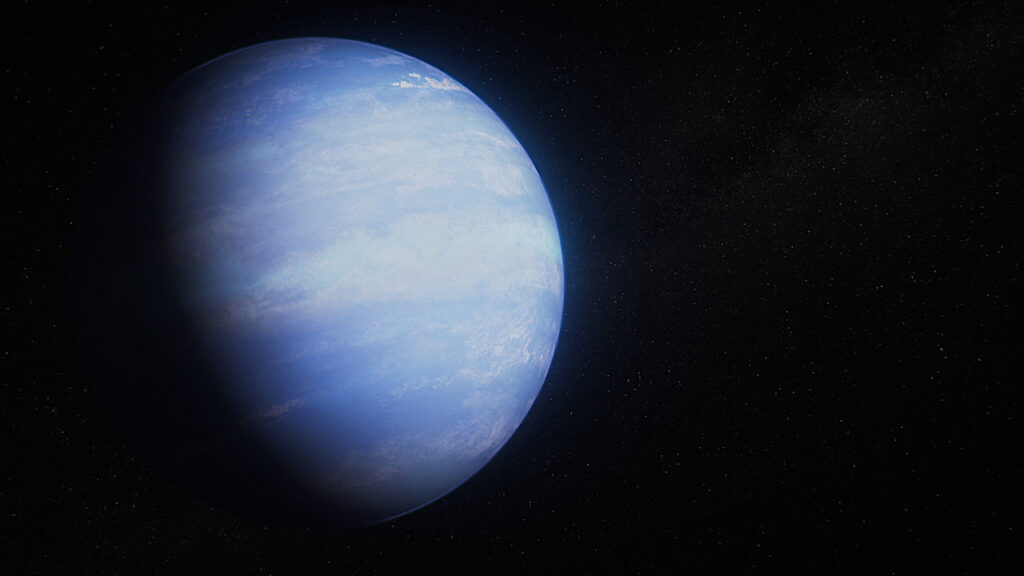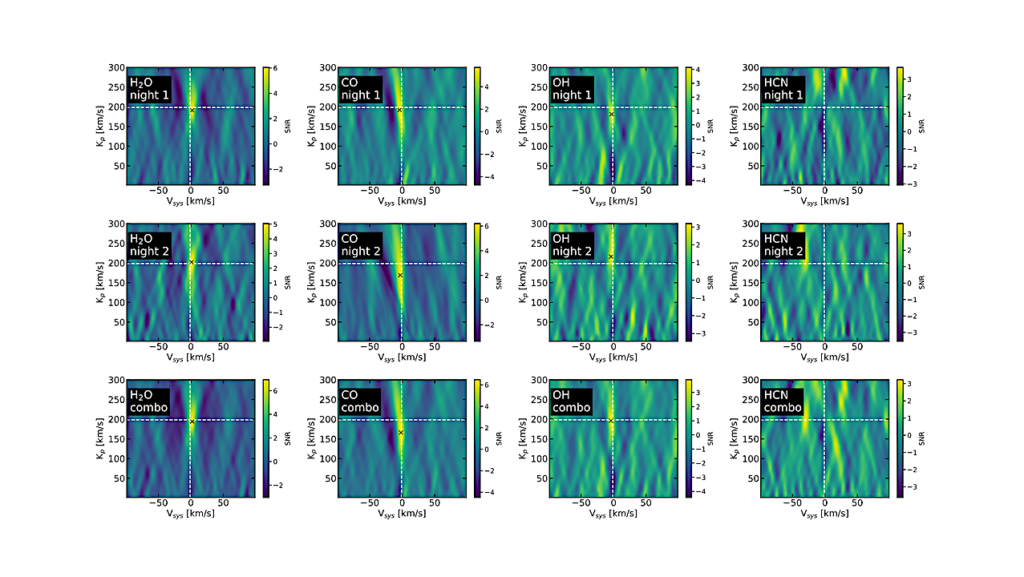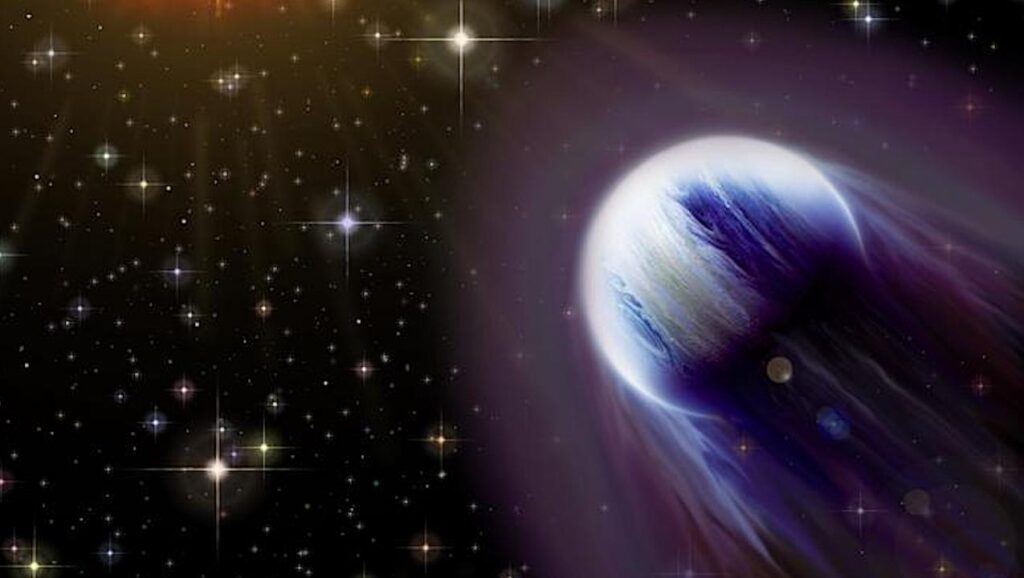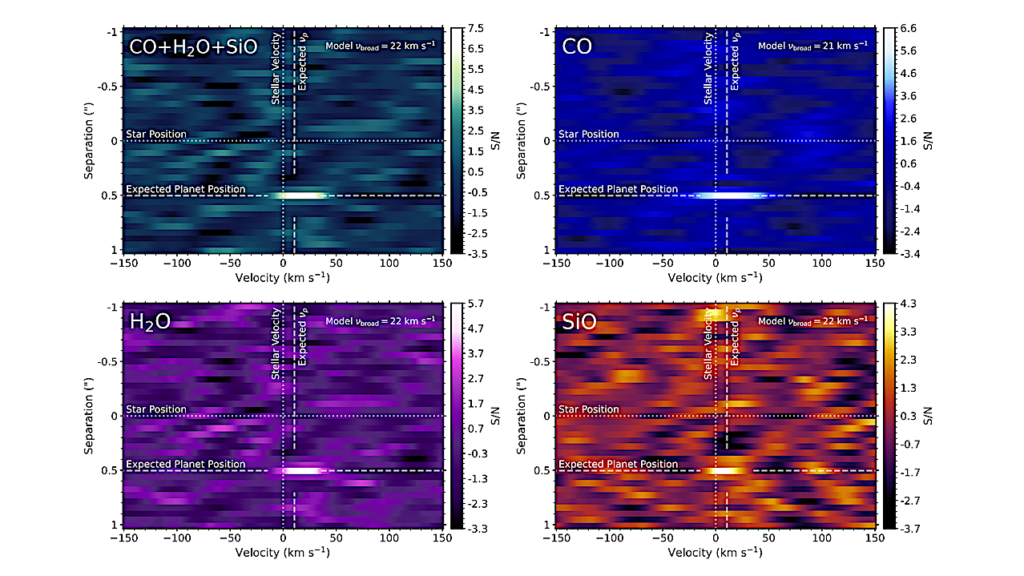Early Results From The HUMDRUM Survey: A Small, Earth-mass Planet Orbits TOI-1450A
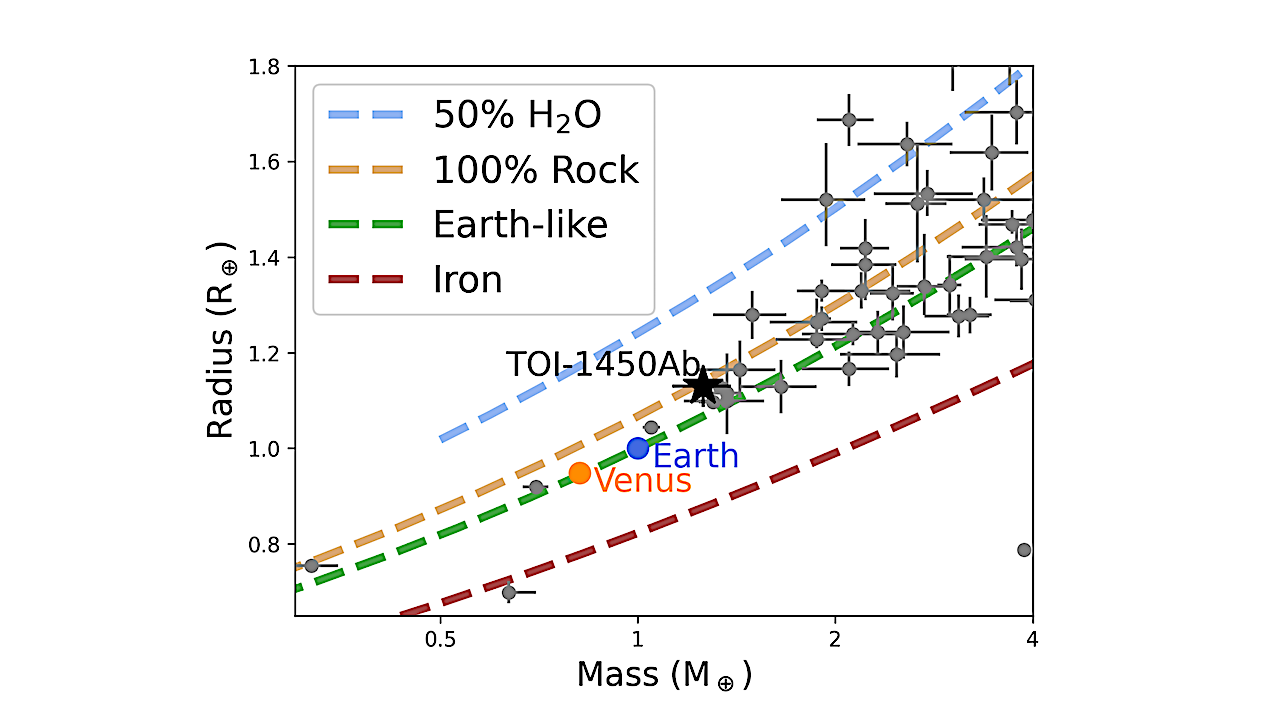
M dwarf stars provide us with an ideal opportunity to study nearby small planets. The HUMDRUM (HUnting for M Dwarf Rocky planets Using MAROON-X) survey uses the MAROON-X spectrograph, which is ideally suited to studying these stars, to measure precise masses of a volume-limited (<30 pc) sample of transiting M dwarf planets.
TOI-1450 is a nearby (22.5 pc) binary system containing a M3 dwarf with a roughly 3000 K companion. Its primary star, TOI-1450A, was identified by TESS to have a 2.04d transit signal, and is included in the HUMDRUM sample. In this paper, we present MAROON-X radial velocities which confirm the planetary nature of this signal and measure its mass at a nearly 10% precision.
The 2.04d planet, TOI-1450Ab, has Rb=1.13±0.04R⊕ and Mb=1.26±0.13M⊕. It is the second-lowest-mass transiting planet with a high-precision RV mass measurement. With this mass and radius, the planet’s mean density is compatible with an Earth-like composition. Given its short orbital period and slightly sub-Earth density, it may be amenable to JWST follow-up to test whether the planet has retained an atmosphere despite extreme heating from the nearby star.
We also discover a non-transiting planet in the system with a period of 5.07 days and a Msinic=1.53±0.18M⊕. We also find a 2.01d signal present in the systems’s TESS photometry that likely corresponds to the rotation period of TOI-1450A’s binary companion, TOI-1450B. TOI-1450A, meanwhile, appears to have a rotation period of approximately 40 days, which is in-line with our expectations for a mid-M dwarf.
M. Brady, J. Bean, A. Seifahrt, D. Kasper, R. Luque, G. Stefánsson, J. Stürmer, D. Charbonneau, K. Collins, J. Doty, Z. Essack, A. Fukui, F. Grau Horta, C. Hedges, C. Hellier, J. Jenkins, N. Narita, S. Quinn, A. Shporer, R. Schwarz, S. Seager, K. Stassun, S. Striegel, C. Watkins, J. Winn, R. Zambelli
Comments: 31 pages, 17 figures, accepted in AJ
Subjects: Earth and Planetary Astrophysics (astro-ph.EP)
Cite as: arXiv:2405.10400 [astro-ph.EP] (or arXiv:2405.10400v1 [astro-ph.EP] for this version)
Submission history
From: Madison Brady
[v1] Thu, 16 May 2024 18:58:46 UTC (10,811 KB)
https://arxiv.org/abs/2405.10400
Astrobiology,


